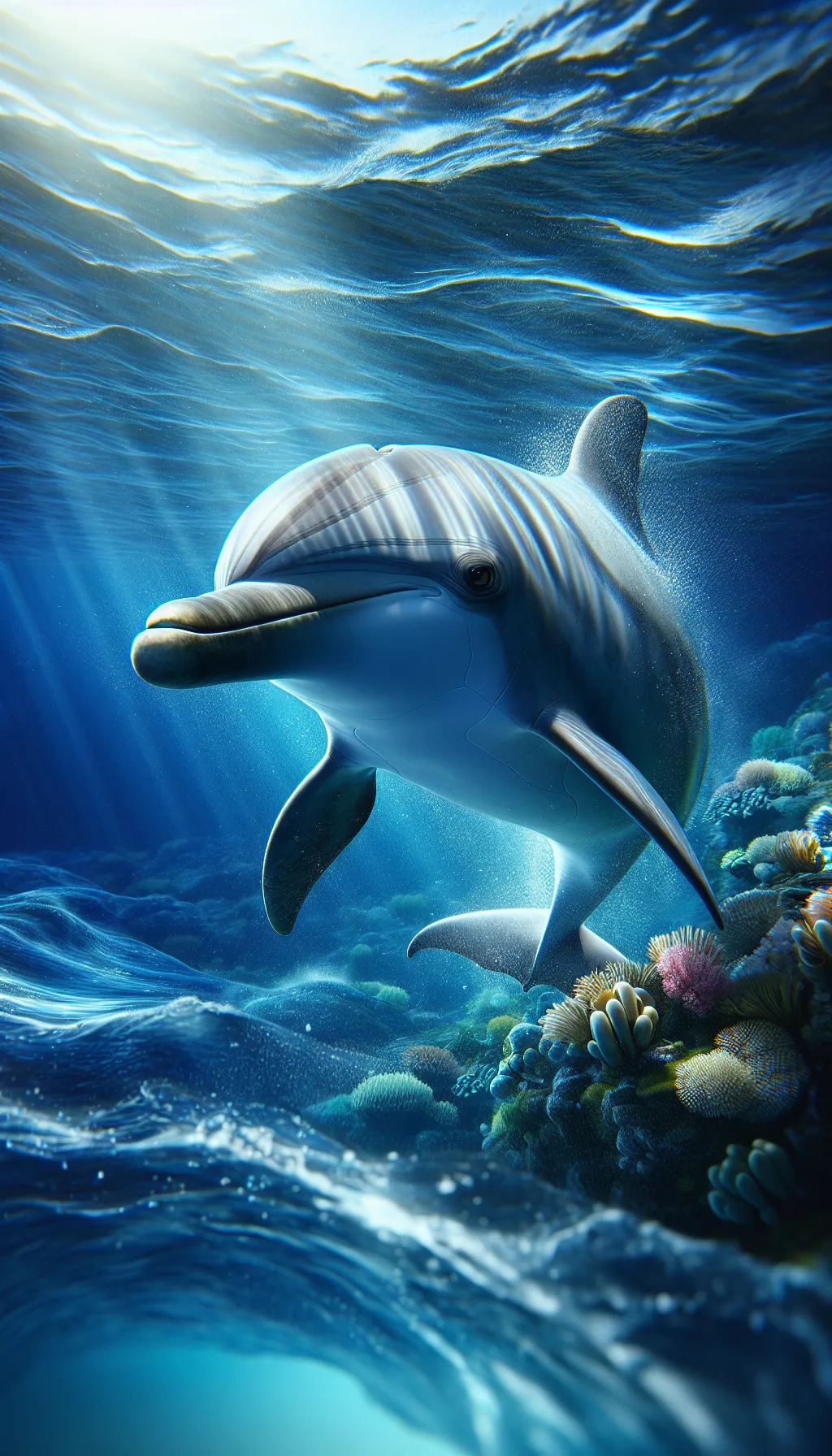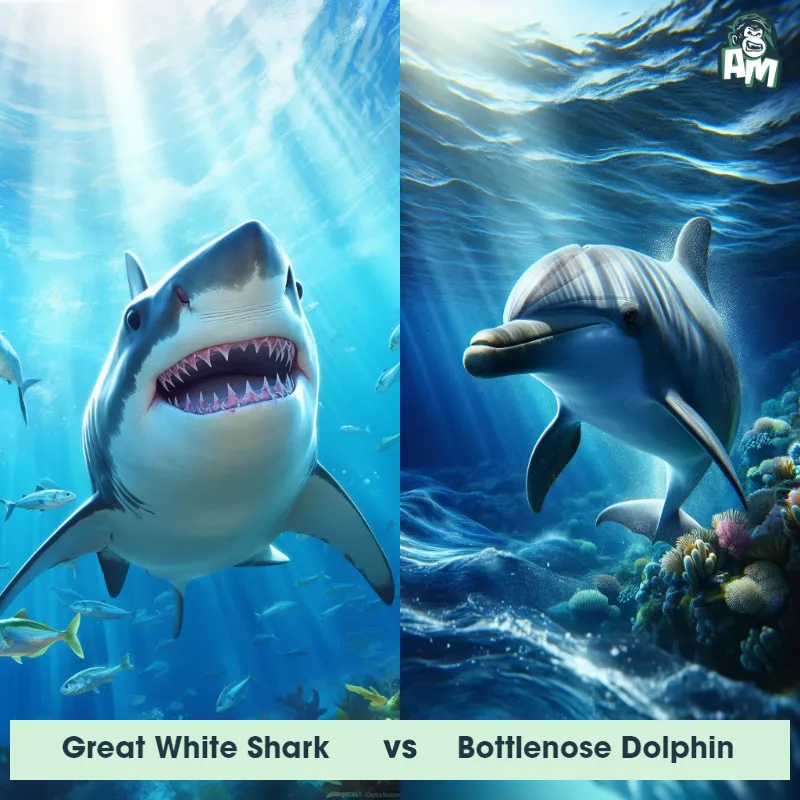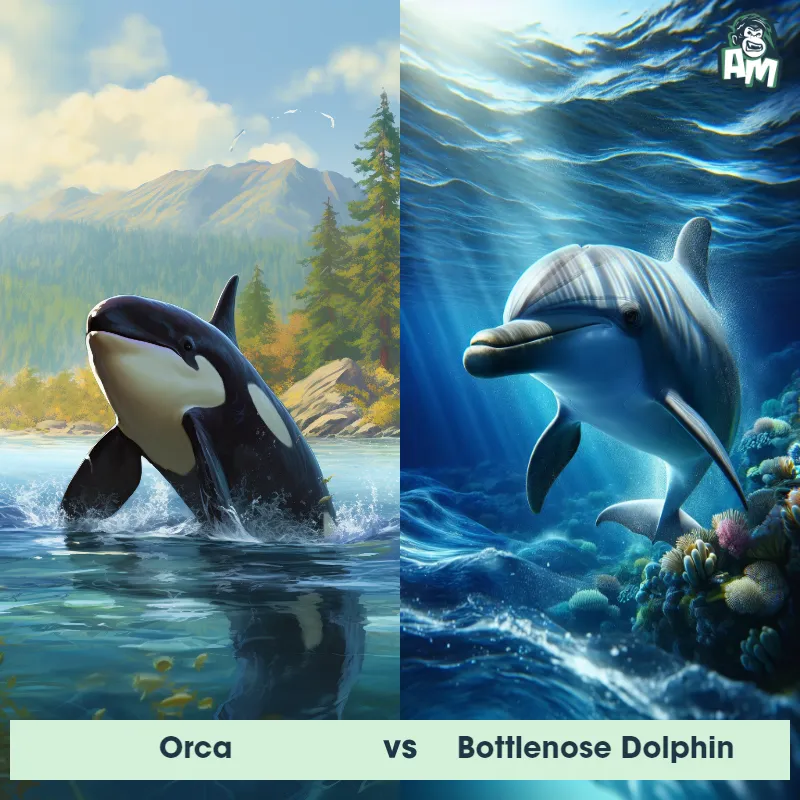The Bottlenose Dolphin
The Bottlenose Dolphin, known for its playful nature and high intelligence, is a marine mammal found in tropical and temperate waters worldwide. With a streamlined body and a dorsal fin on its back, these dolphins are known for their grayish-brown coloration and a curved mouth that gives the appearance of a permanent smile. They have excellent eyesight and use echolocation to navigate and communicate underwater. Bottlenose Dolphins are highly social animals, living in pods of 10 to 30 individuals, and they are known for their acrobatic displays, including leaping, tail-slapping, and riding waves.

| Bottlenose Dolphin | |
|---|---|
| Size | 10-14 feet (3-4.3 meters) |
| Weight | 600-1,400 pounds (272-635 kilograms) |
| Speed | 22mph (35.4km/h) |
| Key Strength | Intelligence and agility |
| Biggest Weakness | Lack of physical power |
| Scientific Name | Tursiops truncatus |
| Family | Delphinidae |
| Habitat | Marine |
| Geography | Various oceans worldwide |
| Diet | Carnivorous, mainly fish and squid |
| Lifespan | 40 years - 50 years |

The Bottlenose Dolphin
The Bottlenose Dolphin, known for its playful nature and high intelligence, is a marine mammal found in tropical and temperate waters worldwide. With a streamlined body and a dorsal fin on its back, these dolphins are known for their grayish-brown coloration and a curved mouth that gives the appearance of a permanent smile. They have excellent eyesight and use echolocation to navigate and communicate underwater. Bottlenose Dolphins are highly social animals, living in pods of 10 to 30 individuals, and they are known for their acrobatic displays, including leaping, tail-slapping, and riding waves.
Fun Fact: A fascinating characteristic of the Bottlenose Dolphin is its ability to use tools, such as sponges. In some populations, dolphins have been observed placing sponges on their rostrums while foraging on the seafloor, protecting their sensitive noses from potential injuries, showcasing their problem-solving skills.
| Bottlenose Dolphin | |
|---|---|
| Size | 10-14 feet (3-4.3 meters) |
| Weight | 600-1,400 pounds (272-635 kilograms) |
| Speed | 22mph (35.4km/h) |
| Key Strength | Intelligence and agility |
| Biggest Weakness | Lack of physical power |
| Scientific Name | Tursiops truncatus |
| Family | Delphinidae |
| Habitat | Marine |
| Geography | Various oceans worldwide |
| Diet | Carnivorous, mainly fish and squid |
| Lifespan | 40 years - 50 years |
Bottlenose Dolphin Matchups
We use AI to simulate matchups between the Bottlenose Dolphin and other animals. Our simulation considers size, strength, and natural predatory behaviors to determine the most likely outcome.

Can't find the Matchup you want?
Create Your Own MatchupBottlenose Dolphin: Diet, Predators, Aggression, and Defensive Behaviors
What do Bottlenose Dolphins eat?
Bottlenose Dolphins are carnivorous marine mammals that primarily feed on a diet of fish, squid, and crustaceans. They are opportunistic feeders, known to hunt cooperatively in groups to catch prey more efficiently. Their diet varies based on their location and the availability of food but typically includes a variety of small to medium-sized fish species.
Do Bottlenose Dolphins have any predators?
While adult Bottlenose Dolphins are apex predators and do not have many natural predators, they are occasionally preyed upon by larger sharks, such as tiger sharks and bull sharks. Calves and juveniles are more vulnerable to predation and may be targeted by larger sharks, killer whales, and occasionally larger dolphins.
Are Bottlenose Dolphins aggressive?
Bottlenose Dolphins are generally known for their friendly and playful interactions with humans and other marine animals. They are not inherently aggressive towards other species or humans, and most encounters with them are peaceful and curious. However, like any wild animal, they can become aggressive in certain situations, such as during mating season or when protecting their territory or offspring.
Do Bottlenose Dolphins fight with each other?
Bottlenose Dolphins are highly social animals that live in complex social groups called pods. While they may engage in physical interactions within their pods, such as play fighting and dominance displays, these interactions are usually non-aggressive and serve to establish hierarchy and maintain social bonds. Serious fights among Bottlenose Dolphins are rare and typically involve disputes over resources or mating.
How do Bottlenose Dolphins defend themselves?
Bottlenose Dolphins have several defense mechanisms to protect themselves from potential threats. They are known to swim quickly and agilely to evade predators, as well as use their intelligence and social bonds within their pod to cooperate and outsmart predators. In some cases, they may also vocalize loudly or use their sharp teeth to fend off attackers.
What is the biggest weakness of Bottlenose Dolphins in a fight?
Despite their intelligence, speed, and agility, Bottlenose Dolphins' biggest weakness in a fight may be their vulnerability to larger predators, such as killer whales and sharks. While they have defensive strategies to evade or fend off attacks, they may struggle to defend themselves effectively against larger, more powerful predators that can overpower them. Additionally, calves and juveniles are more susceptible to predation due to their smaller size and lesser experience in avoiding threats.
Fun Fact: Bottlenose Dolphins possess the ability to recognize themselves in mirrors, indicating a level of self-awareness similar to that of great apes and humans, making them one of the few non-primate species with this cognitive ability.
Fun Fact: It is a well-known fact that Bottlenose Dolphins are highly social animals, but what's interesting is that they have developed specific signature whistles, unique to each individual, to communicate with one another effectively. These signature whistles are similar to names, allowing dolphins to identify themselves and others within their pod.












